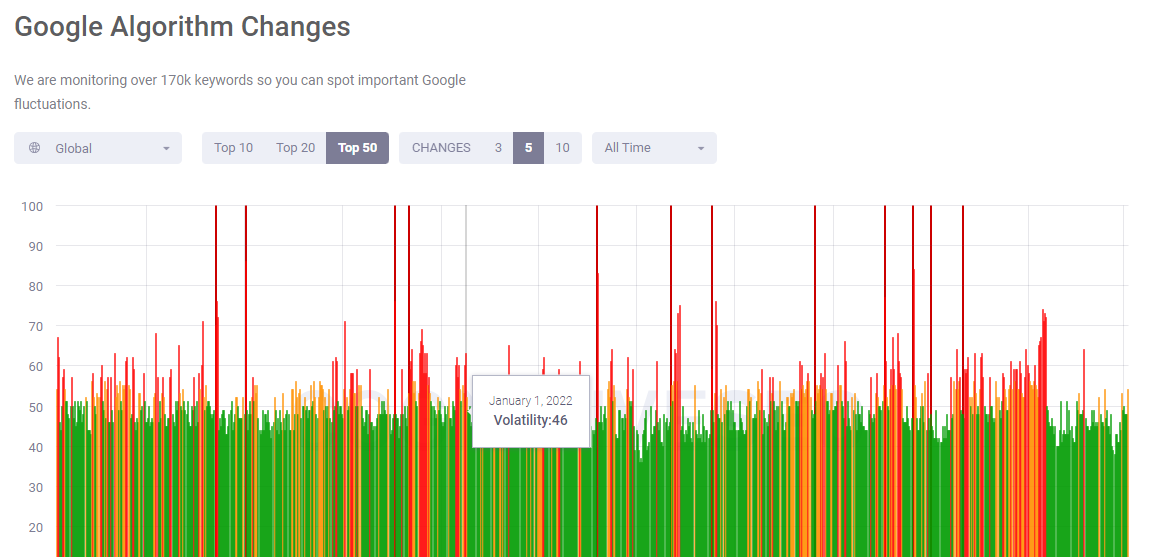SERP volatility is a real danger. It takes a few seconds for search engines to change their algorithms. This makes the situation worse by sudden fluctuations. Let us discuss these in detail and find solutions for How to avoid SERP Volatility.
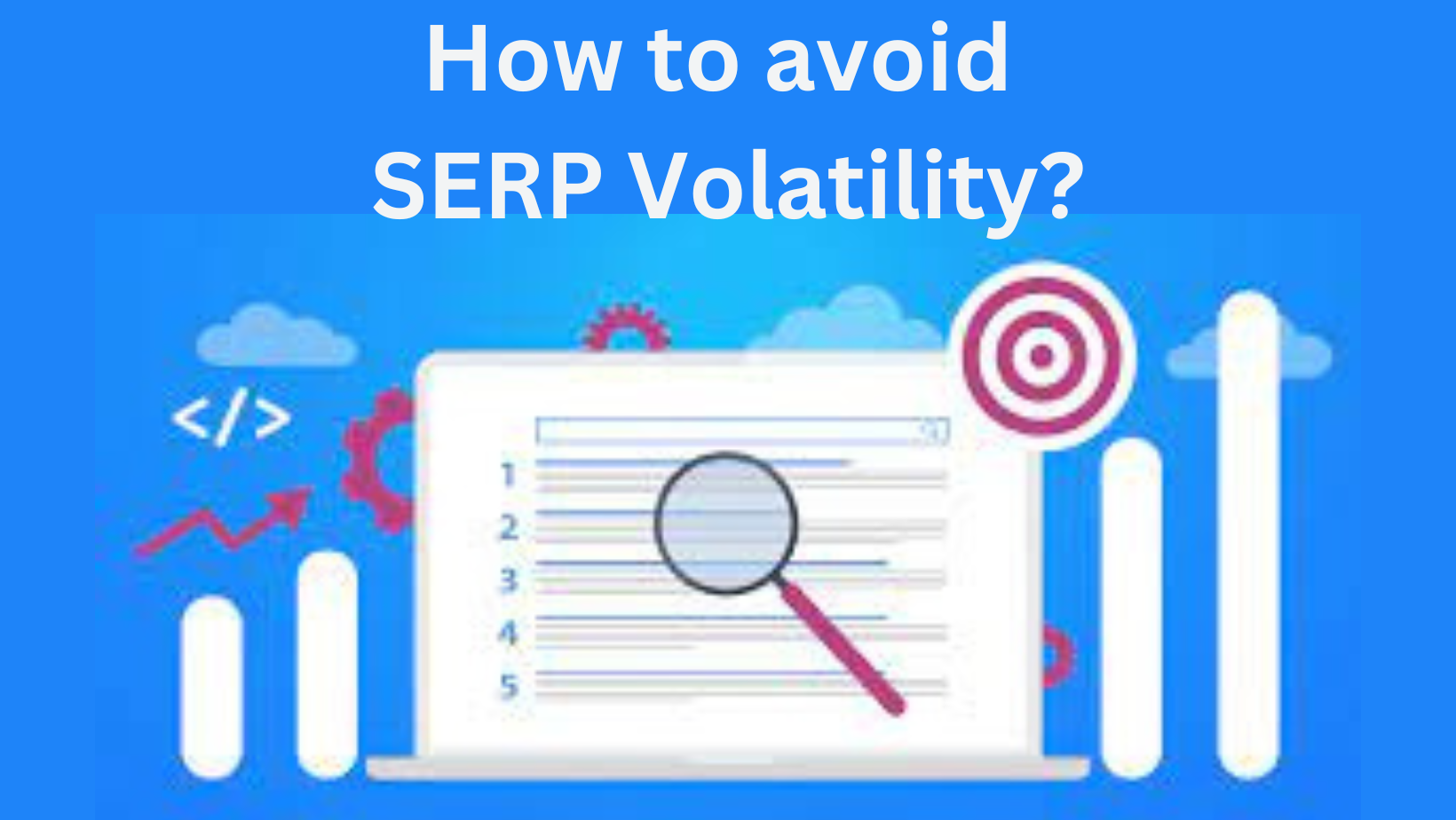
Page Contents:
What Does SERP Volatility Mean?
SERP volatility refers to random fluctuations in positive or negative directions. High volatility means there are frequent changes in the search engines ranking algorithms which has major and minor impacts on the SEO.
SERP volatility impacts the visibility. You may be ranking on top results and can suddenly lose your spot because the keywords you are using may also lose their rankings.
Reasons For SERP Volatility
We have till now discussed SERP volatility and the main reason is changes in the search engine algorithms. This section will discuss how and what changes happen leading to SERP volatility.
Algorithm updates
The algorithm’s update is the core reason for SERP volatility. Search engines keep on updating their ranking criteria to improve the quality of content. This affects even the established websites.
Search engines sometimes update them without announcing them. The newly formed search engine results are based on the relevancy and quality of your content.
User behaviour
User behavior is one of the deciding factors for SERP results. thus, this is an important factor for SERP violation. Search engines mainly focus on user behavior. As a result, they change the ranking pattern. Change in user search intent tends to change in the keyword rankings. These changes will eventually affect your SEO.
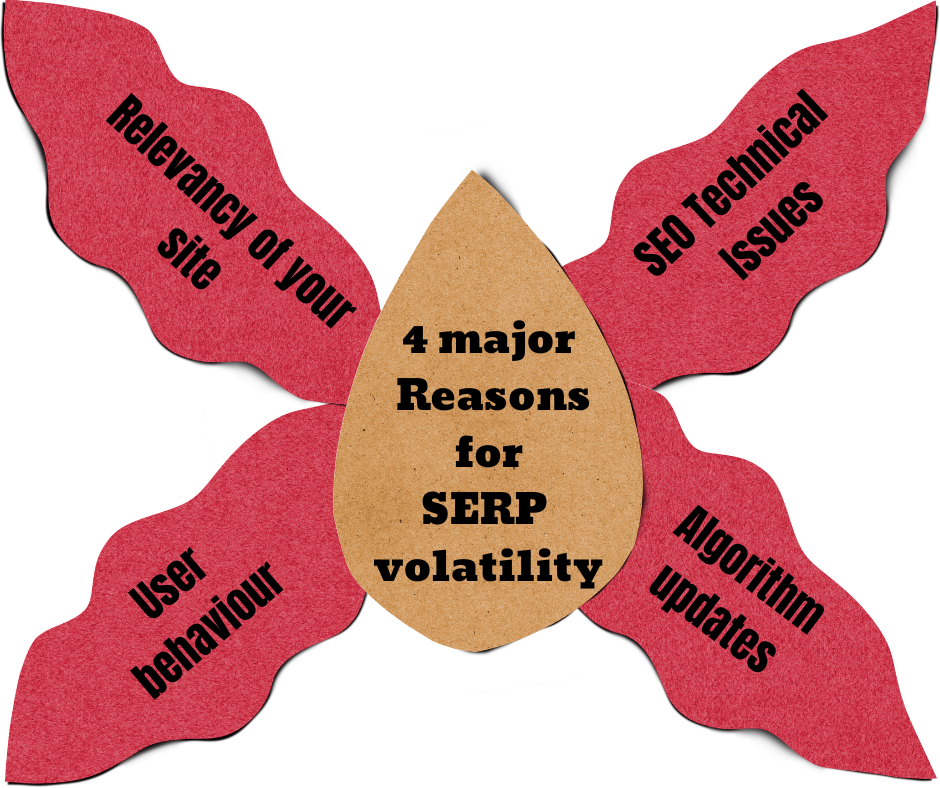
SEO Technical Issues
Technical issues like cannibalization where Google get confused by similar content piece. Indexing issues where robot.txt files are a barrier for crawlers and are not allowed to index. Changing the URL requires re-crawling. This drops your rankings.
Change in canonical tags, editing content, site redirects, broken links, site loading speed, etc. All these issues impact your SEO. thus results in SERP volatility.
Relevancy of your site
Another important reason for SERP volatility is relevancy. Due to changing algorithms and search intent, your site may not be relevant anymore. We can also understand it like this, keywords lose their relevancy for the search intent. Similarly, the keywords you are targeting may have lost their relevancy.
How To Avoid SERP Volatility?
There are many and many ways to avoid SERP volatility. The step is to not panic but rather try to get into the route of the problem. Following are some tips and tricks to avoid SERP volatility.
Keyword tracking
Keep an eye on changing keyword rankings. These rankings are the sole reasons for SERP Volatility. Conduct regular audits to check the keyword’s performance. Try to have these every three or six months at least.
Choose keywords with less competition. Try to use long tail keywords which will help you to cover the specific search intent you want to target.
Check the quality of content
Check that the content of your website is original, updated regularly, and has a good description of the concerned topic. Check your existing information and update it as per the latest trends. Long-form articles with in-depth information. Long-form content can cover wider keywords. Hence reducing the risk of keyword volatility.
Search Intent
All you are doing is for these search intent. Every specific keyword has different content style requirements. The search intent comes in the story here. Understand the user’s search intent properly. Frame your content according to the search intent research.
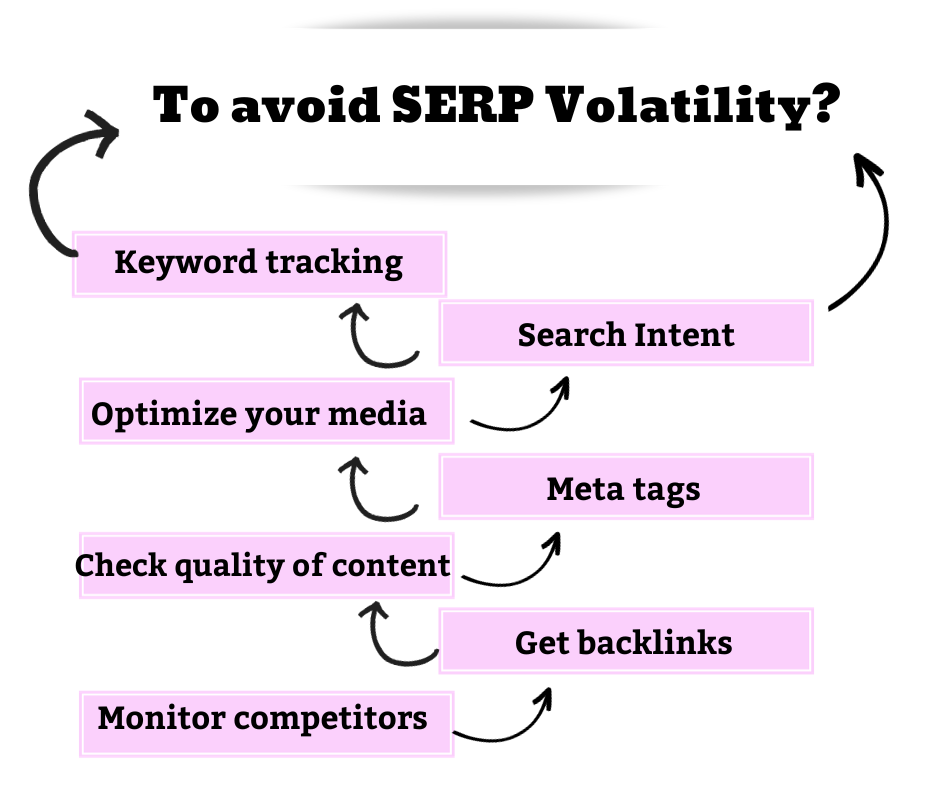
Meta tags
Optimize your meta tags and titles to create an outstanding first impression. Try to add your seed longtail keywords to the meta titles. Users first read these and even search engines. Create your meta description in such a way that it can withstand some fluctuations in the keyword ranking.
Optimize your media
Websites often forget the small but big issues of media optimization. Nobody likes to read a big wall of text some amount of visuals improves readability. Optimize your visuals by adding alt text, titles, and descriptions. Optimize the size and quality of the media file.
Get backlinks
Getting backlinks makes your site authoritative and reliable. Search engines consider you as an important source of information when you have many backlinked websites. Thus this will reduce the risk of getting pushed down.
Monitor competitors
Survey your competitors. Could you keep track of their activity? Find out which content and keywords are getting the maximum conversion. Analyze their plus and minus points and compare yours with them. You can find loopholes and fix them to be a step forward from your competitors.
Tools For Identifying SERP Volatility
You need to keep track of the SERP volatility trends. There are many tools available for tracking volatility. Here is the list of the best 5 tools:
1. Mozcast
Mozcast tool is designed to report the unpredictable Google algorithm weather changes. The tool tracks over 10,000 hand-picked keywords. The Mozcast temperatures reflect the change in the daily rankings. The SERP tracking features also help to analyze the changing trends of other elements like featured snippets, local packs, etc.
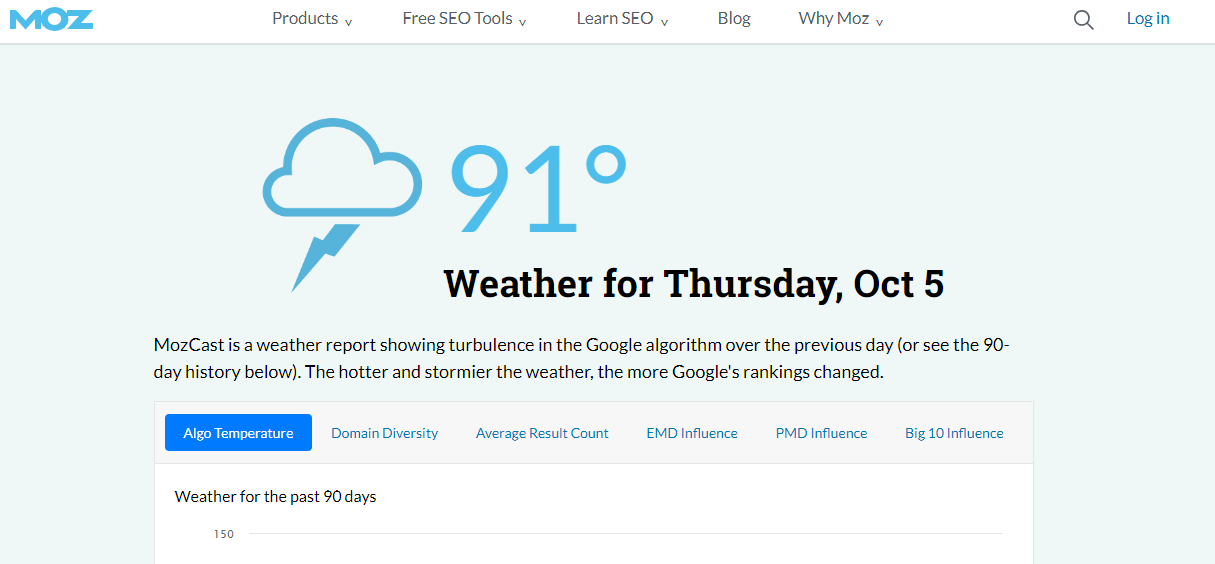
2. Rank Rangers
The rank risk index tool of Rank Ranger Google algorithm monitoring service is a helping aid. It monitors 10,000+ domains and keywords daily. It tracks Google SERP features to determine the reason for fluctuations. It investigates analyzes and graphs the changing patterns of Google SERP.
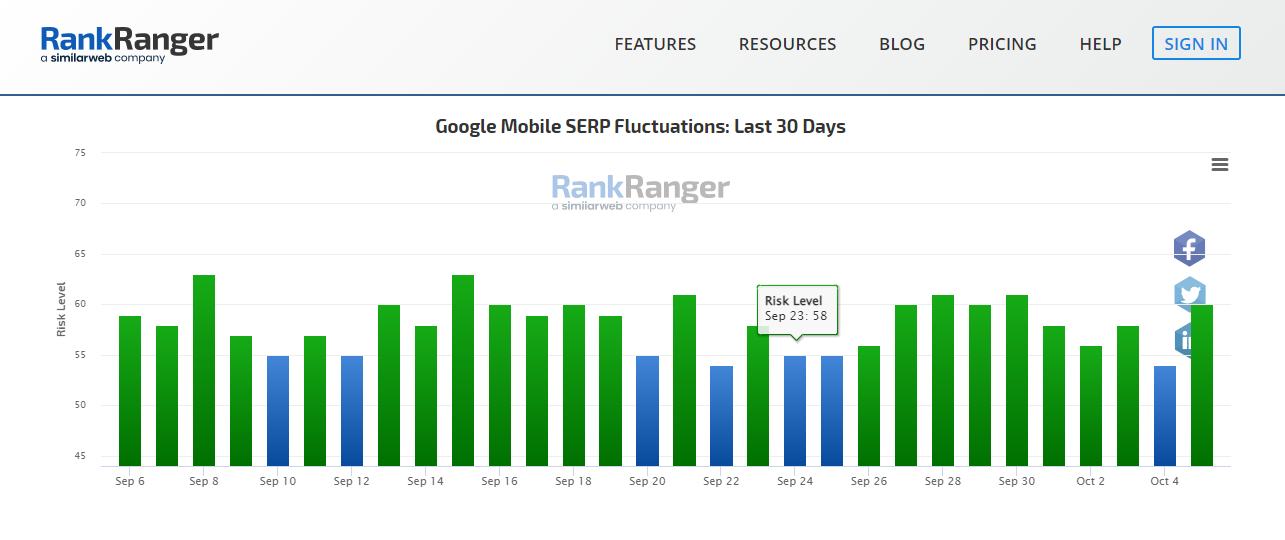
3. SEMrush Sensor
SEMrush sensor tracks millions of websites and keywords. It displays the daily volatility score between 1 and 10. Score 10 is when there is a high SERP volatility rate. You also get premium options for getting deeper insights. You can compare your analysis with website rankings to get the most out of the data.
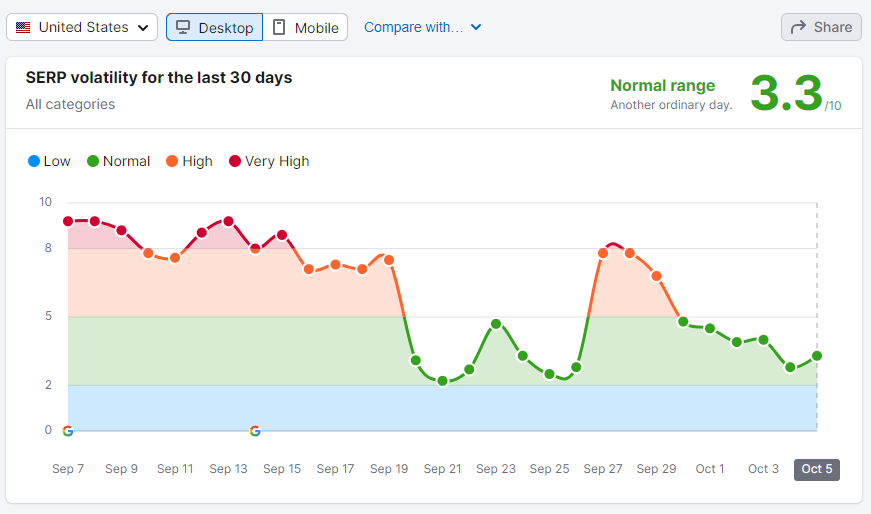
4. SERPWoo
SERPwoo is a reverse engineering tool for SEO. It emphasizes figuring out what is happening with particular keywords in the chosen country. It gives you a deep analysis of SERP volatility. Log in daily to know the current trend of the SERP fluctuations.
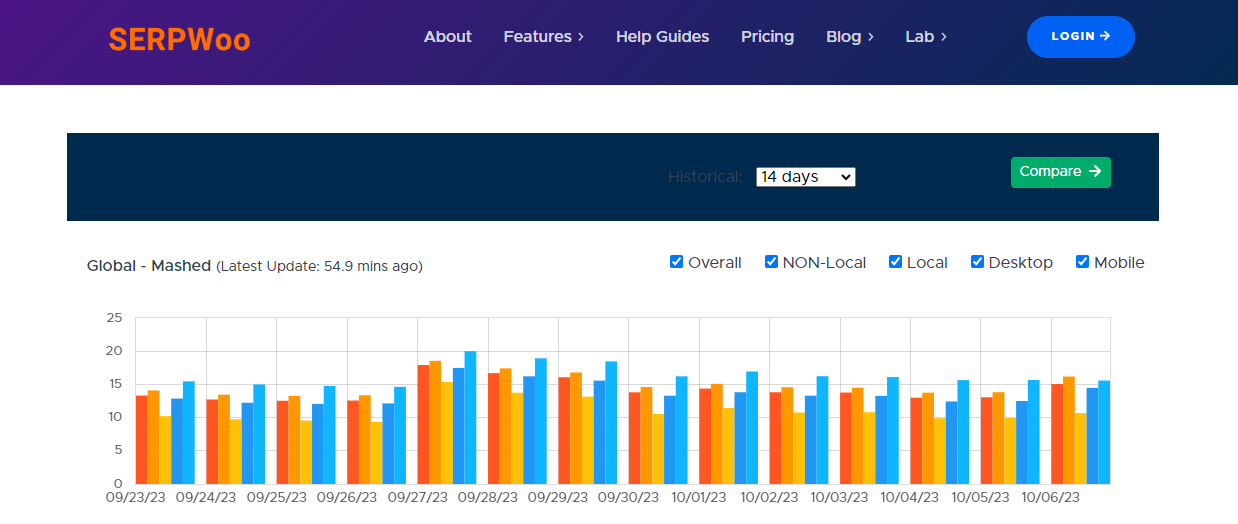
5. Cognitive SEO
Cognitive SEO tool alerts about sudden keyword ranking fluctuations. You can solve any issue on the spot. With an analysis of over 120,000 keywords, the tool is available in 12 countries. It tracks and analyzes global data and provides daily updates.
